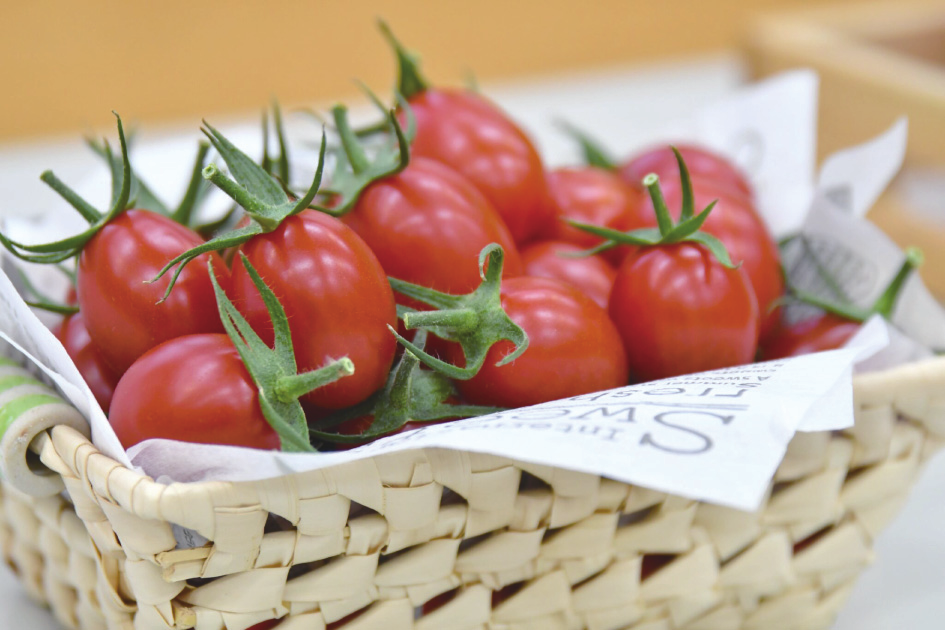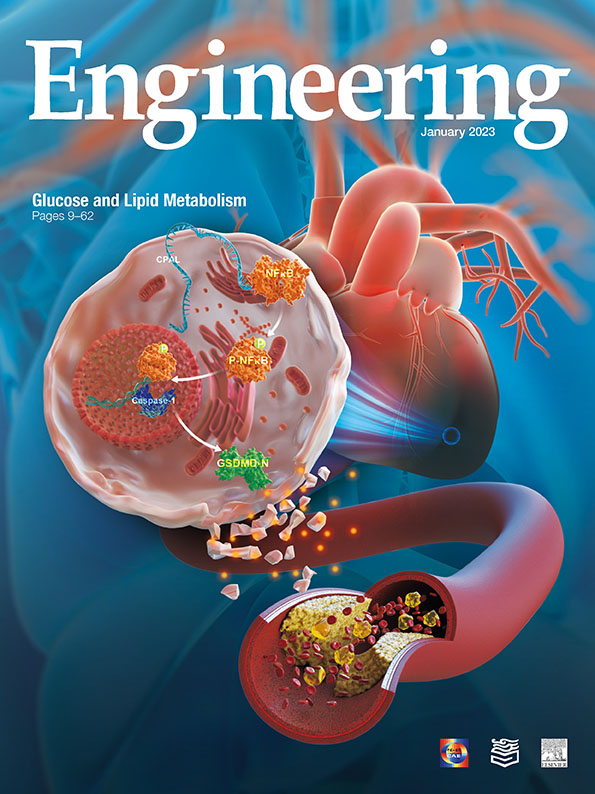In the not-too-distant future, it looks increasingly likely that grocery stores will offer food genetically altered in myriad slight ways to make it healthier, tastier, and more efficient to grow. In 2022, a flurry of research results and regulatory changes around the world brought gene-edited crops closer to consumers’ plates. Unlike genetically modified organisms (GMOs) created by introducing deoxyribonucleic acid (DNA) from one organism into another’s genome, the new gene-edited organisms are engineered by using precise clustered regularly interspaced short palindromic repeats (CRISPR) [1]—technology to alter their own genomes. The distinction promises a plethora of new gene-edited crops and, in many countries now, a smoother road to commercialization.
In a landmark paper in the 22 July 2022 issue of the journal Science, a team of Chinese researchers at the Chinese Academy of Agricultural Sciences in Beijing described a strain of gene-edited rice with a reported 40% increase in yield compared to typical rice plants (Fig. 1) [2]. The CRISPR-engineered biotech rice has two copies of one of its own genes, OsDREB1cC. The gene encodes a transcription factor, a protein that regulates dozens of other genes. By boosting levels of this transcription factor, the researchers cranked up levels of other important proteins; in turn, the rice accumulated extra nitrogen, had more chloroplasts, and flowered more quickly. At three different field trial sites across China, the altered plants had more, and bigger, grains of rice compared to control plants. ‘‘What they have done is to take a very good rice variety and shown they can make it better,” said Stephen Long, professor of plant biology at the University of Illinois, Urbana-Champaign, IL, USA [3].
《Fig. 1》

Fig. 1. In rice plants, like those shown here, researchers discovered that duplicating the gene for a transcription factor, OsDREB1cC, changes the expression patterns of numerous other genes related to plant growth, flowering, and photosynthesis, leading to plants with more and bigger grains of rice. Credit: Gaurav_ Dhwaj_Khadka (CC BY-SA 4.0).
Other research teams have recently applied similar gene editing approaches to change other plant characteristics that could increase pest and disease resistance and also spur growth and improved yields. On 9 February 2022, a research team at the Chinese Academy of Sciences in Beijing’s Innovation Academy for Seed Design published data in Nature describing how precisely editing one gene in wheat plants can make them resistant to powdery mildew, a fungus that attacks and damages wheat and other grains (Fig. 2) [4].
《Fig. 2》

Fig. 2. Wheat infected by the fungus known as powdery mildew, as shown here, can spoil and die, but researchers have now used CRISPR to alter a wheat gene to make it resistant to the infection. Credit: Thomas Lumpkin/CIMMYT (CC BY-NC-SA 2.0).
And on 25 March 2022, a team led by researchers at the China Agricultural University in Beijing, China, reported in Science that they could edit a gene known as KRN2 (kernel row number 2) to increase grain yield by 8%–10% in both maize and rice [5]. The team pinpointed KRN2 by examining what genes had already changed during domestication, the long-term selective breeding process for plants like rice and maize that has, over centuries, led to more resilient—but often lower yielding—crops. ‘‘With CRISPR gene editing, we could just take a handful of these domestication genes, such as KRN2, and introduce them back into their wild species relative,” said Alisdair Fernie, a study co-author and research group leader ‘‘Central Metabolism” at the Max Planck Institute of Molecular Plant Physiology in Potsdam, Germany [6]. ‘‘The idea is that you could make high-yielding but resilient crops, which will be critical for us in the future.”
While some potentially advantageous gene edits emerge from this kind of focus on plant evolution, others come from advances in basic plant science. Long’s lab, for instance, has assembled theoretical models of the limiting factors in plant productivity. The bottlenecks keeping plants from producing more biomass, he said, mostly relate to how well photosynthesis converts sunlight into biomass in our major crops. ‘‘If we understand these genetic bottlenecks and can go in and remove them, we can make photosynthesis more efficient,” he said.
In August 2022, also in Science, Long’s group published proof-ofprinciple results that this kind of rational engineering can work. His group added genes to soybeans that make them switch photosynthesis on and off more quickly to adapt to sun and shade, a change that boosted yield by more than 20% [7]. The published work involved inserting genes from another plant so that the soybeans would have more copies of the on-and-off switches, but Long said his team is now trying to get the same results by using CRISPR to edit a soybean’s own genome.
Boosting the yields of plants is a major step toward bolstering food supplies at a time when hunger and food demand around the world are growing. But gene editing can also be used to make foods more nutritious and palatable, or to simply appeal to fortification trends. In Japan, for example, tomatoes gene edited to contain high levels of gamma-aminobutyric acid (GABA)—a molecule that many people believe improves sleep and blood pressure and reduces stress—hit the consumer market in 2021, marking the first commercial sales of a CRISPR-edited food (Fig. 3) [8]. Sanatech Seed (Tokyo, Japan) developed the altered tomatoes by editing a gene to disable the protein it codes for that normally breaks down GABA in tomatoes.
《Fig. 3》

Fig. 3. These tomatoes may look like those available in many groceries, but they contain high levels of GABA, a molecule that some believe improves sleep and reduces stress. To produce this first CRISPR-altered food to reach the market, researchers used CRISPR to edit a gene to disable the protein it codes for that normally breaks down GABA. Credit: Sanatech Seed (public domain).
Similarly, a team led by researchers at the John Innes Centre (JIC), an independent plant science research institute in Norwich, UK, reported in June 2022 that editing another gene in tomatoes prevents the breakdown of provitamin D, leading to vitamin D-fortified tomatoes [9]. Their CRISPR-based approach could also boost vitamin D levels in related plants such as potatoes and peppers. ‘‘We think that a lot of dietary problems are much better dealt with through foods than through pills,” said senior author Cathie Martin, professor of plant sciences at the University of East Anglia in Norwich, UK, and a project leader at JIC. ‘‘If we can take fruits and vegetables that people already eat and make those a bit better, that could make a difference in terms of population health.”.
Martin also works on developing fortified food crops through more traditional genetic modification approaches—a purple, antioxidant-rich tomato that she engineered by adding snapdragon genes is slated to be sold in the United States next year, for example [10]. But editing tomatoes with CRISPR, she said, offers a new set of tools and a lower barrier for commercialization. ‘‘You can do much more sophisticated things with these newer gene-editing technologies,” said Martin. ‘‘So far, there have been relatively few applications in crops, but the promise is huge.”
In the United States, gene-edited foods have been subject to less regulatory scrutiny than GMOs since 2018, when a US Department of Agriculture statement spelled out that the agency ‘‘does not regulate or have any plans to regulate plants that could otherwise have been developed through traditional breeding techniques” [11]. Genome editing, the statement continued, falls into this category, introducing new plant traits more quickly than selective breeding and not involving any foreign DNA.
Until recently, however, gene-edited foods were still being treated with the same restrictions as GMOs in Europe and Asia. In Asia that changed with the 24 January 2022 publication of new regulations—Guidelines for safety assessment of gene-edited plants for agricultural use (trial)—by the Ministry of Agriculture and Rural Affairs of the People’s Republic of China that allow smaller, faster field trials. ‘‘This is very good news for us. It really opens the door for commercialization,” said plant biologist Caixia Gao of the Chinese Academy of Sciences (Gao led the work editing wheat to make it resistant to powdery mildew) [12].
Then, on 11 April 22, a law went into effect in the United Kingdom that allowed a faster pipeline for plant scientists to get gene-edited seeds into the ground for testing. Weeks later, on 25 May 2022, a bill—still under consideration—was introduced in the UK Parliament to allow a more relaxed set of regulations for the sale of gene-edited food [13]. ‘‘There will still be regulation and it will still take time to get crops to consumers,” said Martin. ‘‘But with our tomatoes, we are now able to get very rapid approval for field trials.”
For scientists who see CRISPR gene-edited food as the way toward a more sustainable, healthy future, these kinds of regulatory changes are welcome. ‘‘The number of people who are food insufficient in the world has been rising steadily,” said Long. ‘‘If you look at the rate at which we are improving the yield of our major crops, we are not keeping pace, but purposeful, smart gene-editing can change that.”













 京公网安备 11010502051620号
京公网安备 11010502051620号




